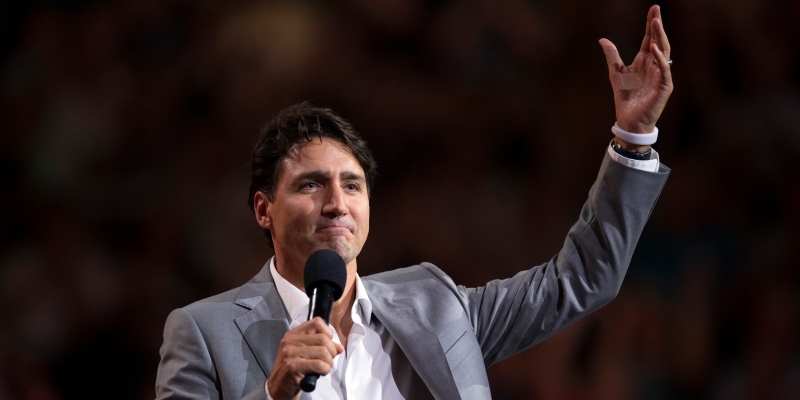Ottawa’s approach to spending—what goes up must continue going up

Sir Isaac Newton famously said “What goes up must come down” to describe the law of gravity. The Trudeau government has operated under no such decree to govern its spending habits.
Since taking office in 2015, the Trudeau government has repeatedly demonstrated a proclivity to increase spending. Adjusted for inflation, annual program spending (total spending excluding interest costs) is expected to grow by $132.7 billion—or 41 per cent—between 2014/15 and 2023/24.
The government has come up with several different arguments to justify such a substantial ramp-up in spending. First, it claimed that the existence of low interest rates permitted the government to increase spending because the immediate consequences of debt would be limited.
In his 2016 budget speech, then finance minister Bill Morneau asserted “Our interest rates have never been lower, so we can borrow on excellent terms.” A similar claim was made in the 2021 budget speech when interest rates plummeted during COVID. Finance Minister Chrystia Freeland professed “In today’s low interest rate environment, not only can we afford these investments, it would be short-sighted of us not to make them.”
Given the government’s justification of low interest rates necessitating spending, one could reasonably expect them to restrain spending growth as interest rates have risen. But that has not been the case.
In fact, while the Bank of Canada rapidly raised its policy interest rate to combat inflation, the Trudeau government simply altered its narrative, claiming that making “investments” will grow the economy and that it would be irresponsible not to spend. Program spending in 2023 will reach a forecasted $453 billion—almost $17 billion more than what the government planned to spend in last year’s budget.
Despite this increased spending, the government claimed it was “exercising fiscal restraint” to avoid pouring fuel on the flames of inflation. With a $40 billion deficit, spending that’s well above pre-pandemic levels, and rising interest costs, it’s difficult to understand how this plan constitutes restraint. If this is the government’s version of restraint, how high would spending be this year if the government was not showing restraint?
The government has also justified spending growth during a recession (or even in anticipation of one). While there’s an automatic spending increase for employment insurance benefits during recessions in response to higher unemployment, empirical research demonstrates scant support for significant stimulus packages implemented by governments. Federal program spending rose by 79 per cent during the first year of COVID in 2020. Some of this spending was likely justified given the unprecedented pandemic situation, but the scale of the increase should come under serious scrutiny.
Clearly, the government firmly believes spending leads to prosperity in all circumstances. In its eyes, the decision not to spend money is more irresponsible than increasing spending. There’s a serious issue with this claim.
Between 2015 and 2019, Canada’s average annual rate of economic growth was 1.9 per cent, lower than the OECD average of 2.2 per cent. In the five years prior to that, when government spending was declining relative to GDP, annual economic growth in Canada had averaged 2.6 per cent—higher than the OECD average of 2.0 per cent. According to these figures, increased federal spending did not cause economic growth to outpace growth in previous years and Canada fell behind on growth compared to other advanced countries.
Is there a situation where the Trudeau government would argue spending should decline? It’s hard to imagine. There has been much discussion about the irresponsibility of not spending money when interest rates are low, or not “investing” in Canadians even when rates are higher. But in reality, it’s irresponsible to increase annual spending by $133 billion in eight years, to assume interest rates would be low for an extended period of time, and break self-imposed fiscal rules when deemed convenient.
Finally, increased spending has led to federal debt growing faster than the Canadian economy. Federal debt as a share of GDP is projected to rise from 31.5 per cent in 2014 to 43.5 per cent in 2023. After adjusting for inflation, annual debt-servicing costs have also grown by $13.6 billion (or 45.1 per cent) over that timeframe.
The Trudeau government has increased spending when interest rates are low and when they are higher. Calls to restrain or reduce spending have been resisted and even derided in nearly all situations. On spending, Ottawa is now abiding by the philosophy of what goes up must continue going up.
Authors:
Subscribe to the Fraser Institute
Get the latest news from the Fraser Institute on the latest research studies, news and events.

